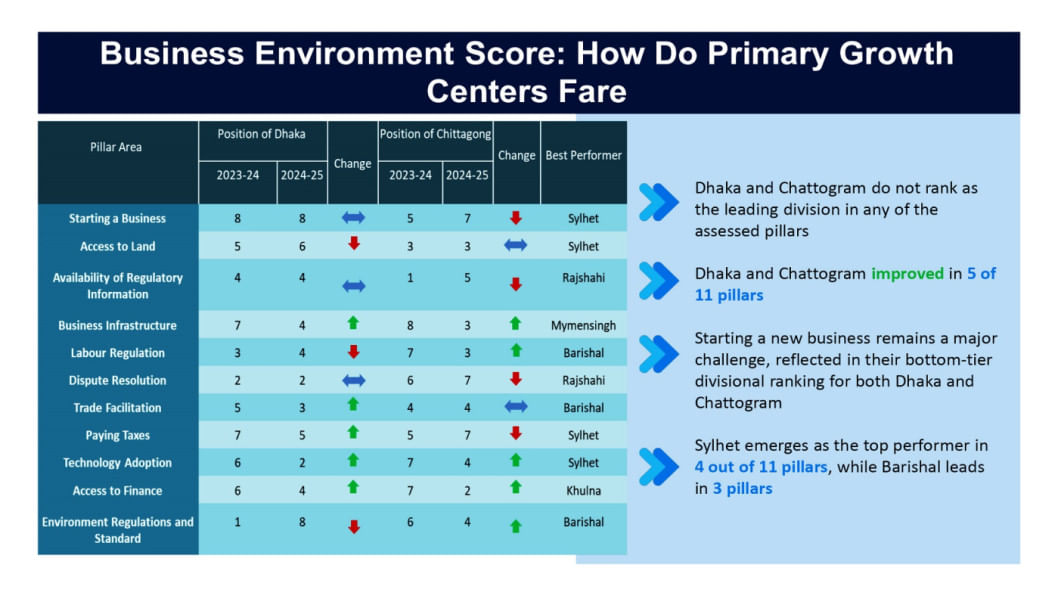Barishal most business-friendly division

Barishal has emerged as the most business-friendly division in Bangladesh, followed by Sylhet and Mymensingh, while Dhaka and Chattogram failed to secure top positions despite being the country's largest business hubs.
This was disclosed in the Bangladesh Business Climate Index (BBX) 2024-25 unveiled by the Metropolitan Chamber of Commerce and Industry (MCCI), and Policy Exchange Bangladesh (PEB) at the MCCI's Gulshan office today.
The BBX, which provides an overview of private sector challenges and opportunities, measures performance across 11 pillars, covering 39 sub-indicators, including infrastructure, access to finance, regulatory environment, tax and trade, institutional capacity, and dispute resolution.
Sylhet topped in four out of 11 pillars. Those are—starting a business, access to land, paying taxes and technology adoption.
Barishal led in three pillars -- labour regulation, trade facilitation and environment regulations and resolution. Mymensingh also performed strongly and was ranked as best performer in business infrastructure.
Khulna topped in terms of access to finance while Rajshahi led in the score board in the category of availability of regulatory information and dispute resolution.
"Dhaka and Chattogram do not rank as the leading division in any of the assessed pillars," said a paper presented at the event.
The BBX said starting a new business remains a major challenge, reflected in the bottom-tier divisional ranking for both Dhaka and Chattogram, reflecting persistent bottlenecks in approvals and operational procedures.
"Dhaka, despite being the country's main business hub, has never secured top positions; reflecting persistent urban inefficiencies," it said.
The report shows that access to finance continues to be the pillar with the weakest performances nationally, even though it recorded a rebound of 12 points compared to that of last year.
Infrastructure saw the sharpest decline, dropping two points in 2024-25.
Sectoral breakdown indicates that electronics and light engineering continued a downward trend, while wholesale and retail trade, along with transport, storage and communication, maintained a stable performance.
Export-oriented industries such as readymade garments, leather, pharmaceuticals, and textiles showed volatility, pointing to their sensitivity to external shocks.

 For all latest news, follow The Daily Star's Google News channel.
For all latest news, follow The Daily Star's Google News channel. 





Comments